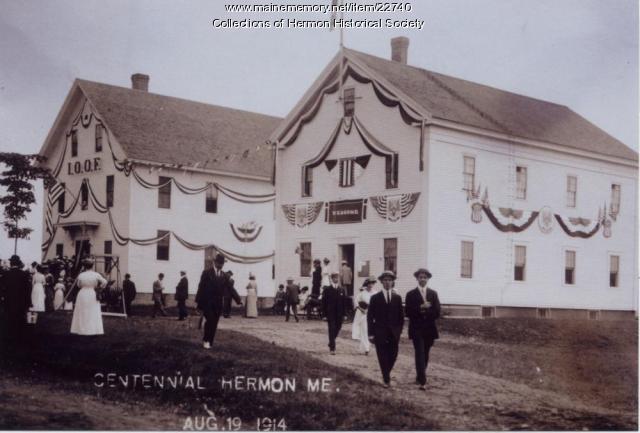Keywords: city
Item 14636
First Congregational Church, City Hall, Brewer, ca. 1910
Contributed by: City of Brewer Date: circa 1910 Location: Brewer Media: Postcard
Item 148242
Contributed by: City of Portland - Planning & Development Date: 1887-09-05 Location: Portland Media: Photographic print
Item 89233
Simonton property, City Street, Cliff Island, Portland, 1924
Owner in 1924: John R. Simonton Use: Fish House
Item 85251
Eckman property, City View Avenue, Little Diamond Island, Portland, 1924
Owner in 1924: May Eckman Use: Summer Dwelling
Item 111664
Biddeford City Building, Biddeford, 1898
Contributed by: Maine Historical Society Date: 1898 Location: Biddeford Client: City of Biddeford Architect: John Calvin Stevens
Item 116431
Portland City Hall, Portland, 1910-1914
Contributed by: Maine Historical Society Date: 1910–1914 Location: Portland Client: City of Portland Architect: Carrere & Hastings Architects
Exhibit
A City Awakes: Arts and Artisans of Early 19th Century Portland
Portland's growth from 1786 to 1860 spawned a unique social and cultural environment and fostered artistic opportunity and creative expression in a broad range of the arts, which flowered with the increasing wealth and opportunity in the city.
Exhibit
Hermann Kotzschmar: Portland's Musical Genius
During the second half of the 19th century, "Hermann Kotzschmar" was a familiar household name in Portland. He spent 59 years in his adopted city as a teacher, choral conductor, concert artist, and church organist.
Site Page
Brewer is the gateway to coastal communities and Acadia National Park. The city along with Bangor also serves as a trading and distribution center for the coastal areas and towns and cities to the north with the total region having a population of approximately 250,000 people.
Site Page
Bath's Historic Downtown - Davenport Memorial and City Hall
"The City Hall earlier provided a home for many of the City of Bath's offices. It housed the offices of the city clerk, the treasurer, the mayor, and…"
Story
Biddeford City Hall: an in-depth tour of this iconic building
by Biddeford Cultural & Heritage Center Voices of Biddeford project
Visual tour and unique insights of Biddeford’s historical landmark
Story
Minik Wallace 1891-1918
by Genevieve LeMoine, The Peary-MacMillan Arctic Museum
The life of Minik, an Inuit person from Greenland who grew up in New York City.
Lesson Plan
Building Community/Community Buildings
Grade Level: 6-8
Content Area: Social Studies
Where do people gather? What defines a community? What buildings allow people to congregate to celebrate, learn, debate, vote, and take part in all manner of community activities? Students will evaluate images and primary documents from throughout Maine’s history, and look at some of Maine’s earliest gathering spaces and organizations, and how many communities established themselves around certain types of buildings. Students will make connections between the community buildings of the past and the ways we express identity and create communities today.
Lesson Plan
Teddy Roosevelt, Millie, and the Elegant Ride Companion Curriculum
Grade Level: 3-5, 6-8
Content Area: Social Studies
These lesson plans were developed by Maine Historical Society for the Seashore Trolley Museum as a companion curriculum for the historical fiction YA novel "Teddy Roosevelt, Millie, and the Elegant Ride" by Jean. M. Flahive (2019). The novel tells the story of Millie Thayer, a young girl who dreams of leaving the family farm, working in the city, and fighting for women's suffrage. Millie's life begins to change when a "flying carpet" shows up in the form of an electric trolley that cuts across her farm and when a fortune-teller predicts that Millie's path will cross that of someone famous. Suddenly, Millie finds herself caught up in events that shake the nation, Maine, and her family. The lesson plans in this companion curriculum explore a variety of topics including the history of the trolley use in early 20th century Maine, farm and rural life at the turn of the century, the story of Theodore Roosevelt and his relationship with Maine, WWI, and the flu pandemic of 1918-1920.






















